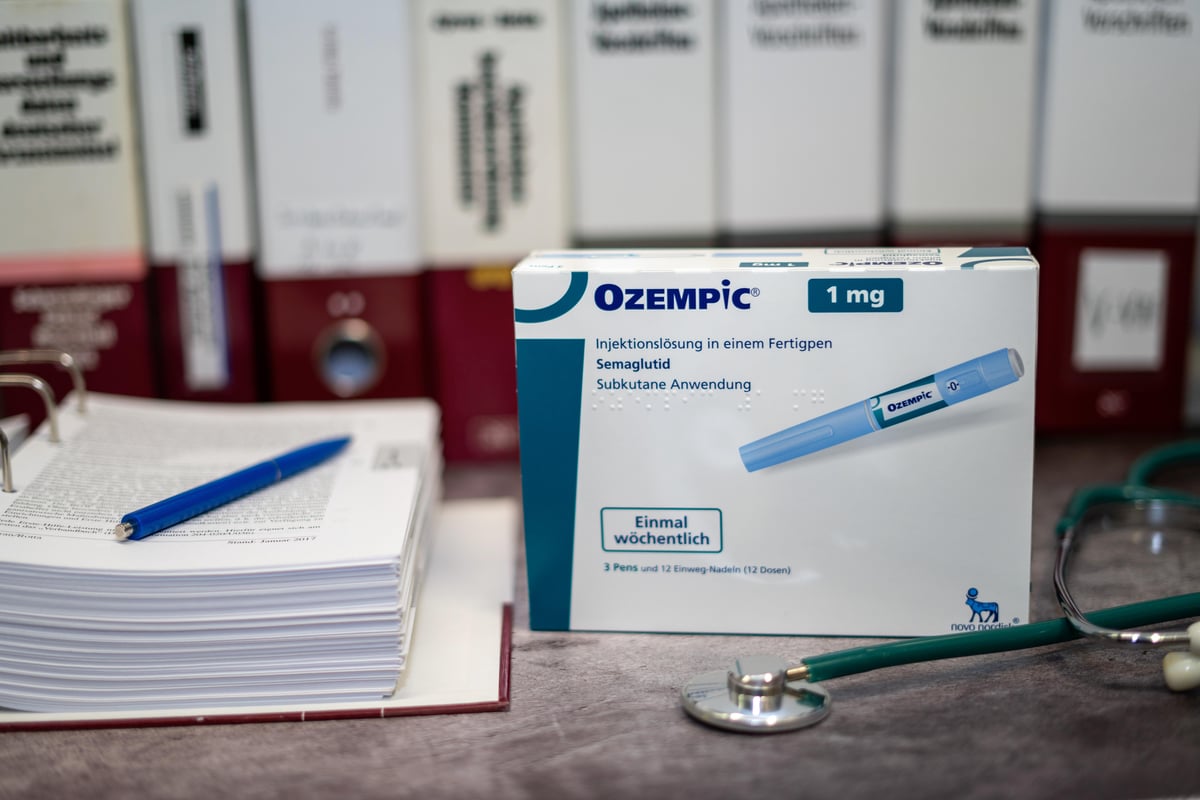Ozempic: What It Is, Uses, Side Effects & Drug Interactions

Ozempic (semaglutide) is an injectable, prescription-only medication that suppresses appetite and slows down digestion.
Here, you will learn more about Ozempic, what it is, what it’s used for, how it works, side effects, drug interactions, foods to avoid while taking it and the difference between Wegovy and Ozempic.
What is Ozempic?
Ozempic (semaglutide) is one of a new type of medications that mimic hormones in your body. This medication mimics GLP-1, which normally acts to slow the movement of food out of your stomach and makes you feel fuller longer.
What is Ozempic used for?
The primary use for Ozempic is to help patients with type 2 diabetes lower their blood sugar if it goes too high. Secondly, it has been found to prevent heart disease, heart failure, stroke and kidney disease. Another use — one that is increasingly popular — is as a weight loss drug.
How does Ozempic work?
Ozempic works by mimicking a normal hormone in the body, GLP-1.
“When blood sugar levels start to rise after someone eats, these drugs stimulate the body to produce more insulin," said Dr. M. Regina Castro, a consulting endocrinologist at the Mayo Clinic in Rochester, Minn. "The extra insulin helps lower blood sugar levels.”
But how does semaglutide work for weight loss?
Castro said the reasons are unclear, but “doctors do know that GLP-1s appear to help curb hunger. These drugs also slow the movement of food from the stomach into the small intestine. As a result, you may feel full faster and longer, so you eat less.”
Wegovy versus Ozempic: What’s the difference?
Wegovy and Ozempic are different brand names for semaglutide. Both are given by injection under the skin once a week.
Ozempic was approved for use in diabetic patients in conjunction with dietary changes and other medications. Wegovy was approved as a treatment for weight loss in obese patients.
Ozempic dosage:
Ozempic dosage starts at 0.25 mg a week and is gradually increased to a maximum of 2 mg per week. It is given via an injection pen. With Wegovy, the only difference is that the maximum amount is 2.4 mg weekly.
Ozempic side effects:
The most common side effects of Ozempic are:
- Nausea and vomiting
- Diarrhea
- Dehydration
Other more serious potential side effects include:
- Severe ongoing abdominal pain, which could be due to pancreatitis
- Hypoglycemia — If you combine a sulfonylurea or insulin with Ozempic, it might increase your risk of experiencing low blood sugar
- If you have retinopathy (diabetic eye disease), this medication can lead to worsening of your vision
Some patients complain of looking older because of a phenomenon dubbed “Wegovy or Ozempic face,” caused by the loss of fat from their face. The result is an older, gaunter appearance.
Ozempic drug interactions
Some potential drug interactions to be aware of: Insulin or sulfonylureas (glipizide, glyburide, tolbutamide) may cause hypoglycemia (low blood sugar) when given in conjunction with Ozempic.
Tell your doctor if you have a history of thyroid cancer, type 1 diabetes, pancreatitis, multiple endocrine neoplasia syndrome type 2 (MEN 2) or depression, as Ozempic would not be the right choice for you.
Ozempic foods to avoid
Ozempic decreases appetite so it may be necessary to change your eating habits to give your body the nutrients it needs. Some foods/drink types to avoid include:
- High fat, fried and greasy foods
- Refined carbohydrates (white bread, white rice, pasta and desserts)
- Coffee
- Alcohol
- Big meals — These can make you feel nauseated or bloated
While semaglutide (Ozempic, Wegovy) isn’t for everyone, these drugs have been found to be a beneficial addition to the treatment of type 2 diabetes and obesity in some people.
Resources
HealthDay: Taking Ozempic? Here Are Some Foods to Avoid
Mayo Clinic: GLP-1 agonists: Diabetes drugs and weight loss
Mayo Clinic: Semaglutide (Subcutaneous Route)
Medicines.org.uk: Ozempic® 0.25 mg solution for injection in pre-filled pen
UCHealth Today: Wegovy vs. Ozempic: The truth about new ‘weight-loss’ drugs
Related Posts
Treatment Effect of Tofacitinib, Adalimumab Compared in RA
WEDNESDAY, July 12, 2023 (HealthDay News) -- For adults with rheumatoid...
Breast, Cervical, Prostate Cancer Screening Still Lower Than Before Pandemic
FRIDAY, March 3, 2023 (HealthDay News) -- Among age-eligible adults in the...
Suicide Rates Among U.S. Adolescents Doubled in 10 Years
MONDAY, May 1, 2023 (HealthDay News) -- Suicides among the youngest U.S....
